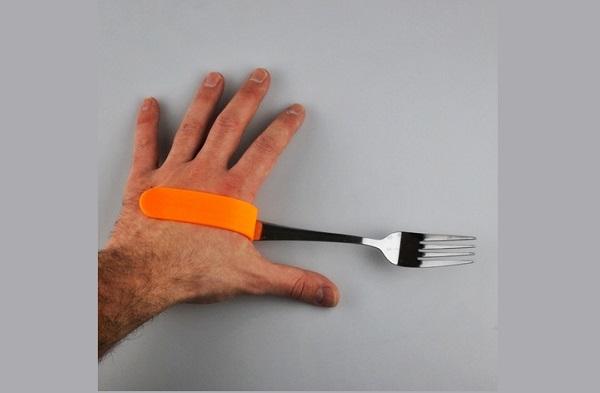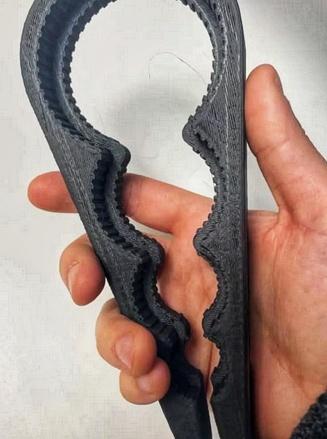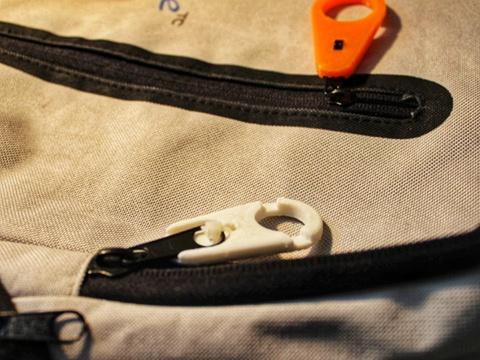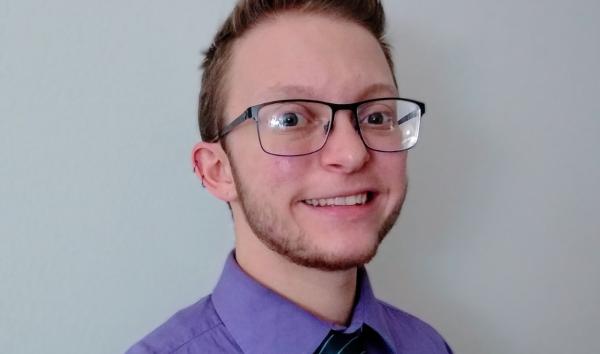
Date:
An image of a palm utensil holder. The device assists people that have a hard time gripping utensils to eat. It can also potentially be used on a person’s foot if they do not have or have use of their hands.
3D printing is used for many purposes. From bridges to custom parts to chocolate, people find new ways to use the technology as it continues to evolve. At The Franklin Institute, we use our 3D printers to make assistive technology devices.
Assistive technologies (AT) are tools that help people function independently in their daily life. These devices can be low-tech, or high-tech depending on how they’re built. 3D printed devices are usually more affordable and more customizable than manufactured versions. We typically 3D print low-tech items in partnership with Technology for Our Whole Lives (TechOWL) at the Institute on Disabilities at Temple University.
TechOWL connected with The Institute in 2019 after a Temple student who worked part-time at the museum told TechOWL staff about the 3D printers in the Tech Studio exhibit. After a few exchanges between organizations, a partnership was formed. The Institute was already using 3D printers every day in the exhibit for educational demonstrations, so it made perfect sense to show visitors a real-world, functional application of the technology while helping people. The Franklin Institute is one of several partner organizations that make devices to support the 3D Printed AT catalog portion of CreATe Together. We began filling special orders but had to pause the partnership throughout most of the pandemic and resumed printing for TechOWL a few months ago.
We print many of the standard AT catalog items at the museum, such as bottle openers, zipper helpers, and utensil holders. We print during regular museum hours (8 hours a day) as often possible. That means we make at least one device a day, seven devices a week on average. The time it takes to 3D print something is determined by a lot of factors—such as size, how hollow or solid it is, complexity of the design, and type of material used—so sometimes we can make more than one item a day depending on the design. Since resuming our partnership, The Institute has produced hundreds of assistive devices for TechOWL. The next time you visit the museum, be sure to check out Tech Studio to see what we’re printing!
If you or anyone you know could benefit from TechOWL’s services, check out their list of services for individuals and organizations and share them with others.

Image of a bottle opener with multiple size options. This helps people who do not have the dexterity to grab and twist bottle caps with their fingers.

Image of zipper helpers, which provide a greater surface area for people to grab on to. This can be done with their hands, mouth, or feet depending on their individual abilities.

About the author
Max
,
Exhibit Development Specialist
Max serves as an advocate for the Franklin Institute’s audience. He researches the content for exhibitions and live science shows. As part of the Experiences and Exhibitions team, he works alongside designers and educators to create an engaging visitor experience around the Institute.
Max earned a Bachelor’s of Art in Art History with a Studio Art Minor in Scientific Illustration from Arcadia University. His favorite art historical topics include the Italian Renaissance, Post-Impressionism, and ancient Greco-Roman art. He plans to pursue a graduate degree in the future.

